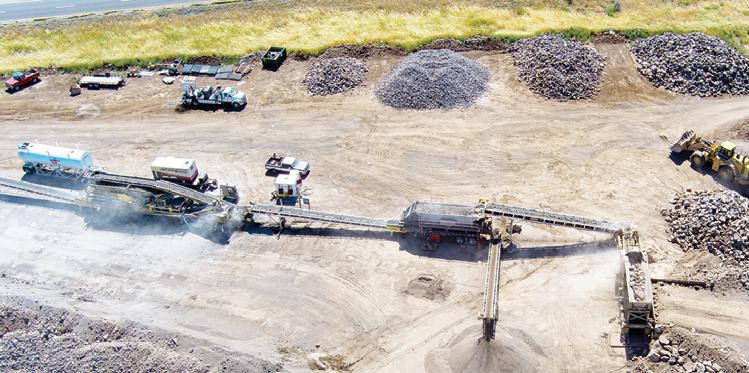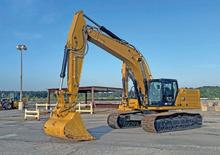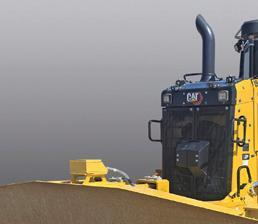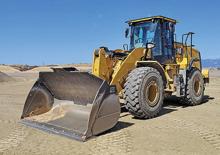UDOT Announces $1.68B in New 2025 Construction Projects
The Utah Department of Transportation (UDOT) announced on April 16, 2025, that 152 new construction projects worth $1.68 billion will start this year, with another 145 continuing construction.
Planned improvements range from infrastructure such as new interchanges, bridges and lanes to community-building measures such as extending transit routes and building trails.
“Every day, Utahns are out driving to work, picking up kids, heading to the mountains or just getting where they need to go,” UDOT Deputy Director Lisa Wilson said. “Our job is to make sure those trips are as safe and smooth as possible. These projects might cause some short-term delays, but in the long run, they’ll mean better roads, less congestion and a safer and more reliable way to get around — no matter how you travel.”
Here are some of the major projects this summer: 1800 North and I-15 intersection: Davis County — $385 million
This project will build a new interchange at the intersection of 1800 North and Interstate 15 in Clearfield. Additionally, to accommodate current and future travel in the area, 1800 North will be widened up to 2000 West, an overpass at 500 West to cross the railroad will be added and other measures are planned to create space for a future Hill Air Force Base entrance gate. Work began in March and is expected to finish in the fall of 2027.
I-215 from SR-201 to North Temple: Salt Lake County — $190 million
Crews will repave 3 mi. of Interstate 215 and 14 mi. of ramps on State Route 201, Interstate 80 and California Avenue. In addition to repaving, 22 bridges will be repaved, a new drainage system will be installed, and pavement will be preserved for the next 15 years. This project is expected to start this summer and is anticipated to take two years to complete.
I-15 from Kanarraville to South Cedar interchange: Iron County — $90.3 million
This project will create a 13-mile-long northbound climbing lane on I-15 from the Kanarraville rest stop to the South Cedar interchange. Additionally, the project will widen I-15 to three northbound lanes, tying in an existing three-lane section constructed in 2020. The project also will reconstruct the northbound side of the Hamilton Fork interchange to improve clearance and construct a roundabout on the east side of I-15, next to Exit 51. Construction is anticipated to begin in May and is expected to conclude by December 2026.
Ongoing construction will continue this summer on several major UDOT projects:
Mountain View Corridor: Utah County — $466 million
Four new miles of freeway are being constructed to connect 2100 North in Lehi to Porter Rockwell Boulevard in Herriman. This project includes upgrading the intersection of
2100 North and Redwood Road with a new bridge, installing wildlife fencing and creating a multi-use trail. Construction is expected to last through the spring of 2026.
Bangerter Highway interchanges: Salt Lake County — $415.3 million
For more than a decade, UDOT has worked to eliminate stoplights on Bangerter Highway by converting intersections into interchanges. UDOT is building our new interchanges at 9800 South, 13400 South, 2700 West and 4700 South, with completion expected by the end of the year.
5600 South in Roy and Riverdale: Weber County — $361 million
This year, the 5600 South Improved Mobility project will begin phase three of its construction. This includes construction on the middle and side of I-15, as well as the reconstruction of 5600 South. Construction is expected to last through the summer of 2026.
State Route 162 and State Route 262: San Juan County — $152 million
Crews are continuing paving work to improve safety on state routes in San Juan County on the Energy Corridor. This year, crews also will install fiber-optic cables, cattle guards and drainage systems. Construction is expected to last through the spring of 2026.
Midvalley Express route: Salt Lake County — $104.1 million
Led and funded by UTA, UDOT will begin major construction of UTA’s third bus rapid transit (BRT) route. This brand-new, seven-mile route will have 15 stations and provide a valuable connection to UTA commuter rail and light rails.
The construction of this all-electric line also will include the creation of 1.4 mi. of bus-only lanes and priority traffic signals to speed up the transportation of public transit users. Construction is expected to wrap in fall 2026.
Denver Breaks Ground On $55M Westwood Recreation Center
Construction is beginning on the new $55 million Westwood Recreation Center in Denver, Colo., according to 9news.com.
The city held a groundbreaking ceremony on April 12, 2025, for the center. FCI Constructors Inc. is the project’s contractor.
Situated at the corner of Morrison Road and Walsh Place, the nearly 40,000-sq.-ft. center will feature an aquatics center with a lap pool a lazy river and waterslide that loops in and out of the building. It also will include a multipurpose room, a full-size gym, fitness areas, locker rooms and kidswatch area, 9news.com reported.
Outdoor amenities will include multi-use turf fields.
Construction is expected to be completed by summer 2027, according to 9news.com. The center construction is supported by a $37.5 million investment from the Elevate Denver Bond program, a voter-approved initiative.
Denver Mayor Mike Johnston, District 3 Councilwoman Jamie Torres, and Denver Parks & Recreation officials were among those attending the groundbreaking, 9news.com reported.
“Thanks to the residents of Westwood who made their voices heard, this new recreation center will bring resources and amenities to a neighborhood that has always deserved them,” Johnston said. “The Westwood Recreation Center will stand as a lasting testament to how we can come together as a community, and Westwood’s history, culture, and vibrant spirit that make it so unique.”
“The Recreation Center in Westwood is a
pivotal and groundbreaking project, and I could not be more proud of the community and the city to be celebrating this groundbreaking,” Torres said. “It has been a very long road to get to this point and residents throughout west and southwest Denver have truly deserved this beautiful recreation center. This day is a testament to the hard work, advocacy and perseverance of all who ensured this day would be possible."
Denver Parks and Recreation Executive Director Jolon Clark said the center will be envi-
ronmentally sustainable. Electricity and geothermal energy will be used to heat and power the building, denvergazette.com reported.
“This is going to be one of the most sustainable, environmentally friendly buildings the city of Denver has ever built,” Clark said. “There will be no gas, no burning of those fossil fuels coming in to heat or cool the recreation center.”
(All photos courtesy of Denver Parks & Recreation.)
A rendering of the Westwood Recreation Center
Utah Department of Transportation photo A crew works on an overpass project.
Officials hoist ceremonial shovels of dirt at the Westwood Recreation Center groundbreaking in April.
$522M Project Upgrades Lengthy Stretch of Interstate
The project includes installing a flex lane system, which ADOT said is a “proven technology to alleviate traffic congestion during peak travel times, or if an unplanned incident creates delays.”
The flex lanes operate as an additional two-lane roadway that carries one direction of traffic at a time and can alternate between northbound and southbound depending on the greatest need.
This project is being financed through state highway funds, an Infrastructure for Rebuilding America (INFRA) grant, Maricopa Association of Government programmed funds for the section in Maricopa County and additional federal aid to match state highway funds.
The project has multiple benefits, according to ADOT.
“The section of I-17 is one of the most heavily utilized roadways in Arizona, with more than 1 million travelers each year,” according to the project website. “This project will reduce congestion, which helps to improve safety by creating more space between vehicles. With the addition of new travel lanes from Anthem Way to Black Canyon City and flex lanes from Black Canyon City to Sunset Point, capacity on I-17 will increase in both directions. This will better accommodate existing traffic and increased traffic as the demand on I-17 continues to grow.”
The work also supports economic growth.
“Each year, more than $300 billion in goods are shipped to and from Arizona,” according to the website. “I-17 is identified as one of the state’s key commerce corridors moving people and goods between southern and northern Arizona. … This project will help make I-17 a more favorable route for commercial truck drivers who travel through the region and support our local businesses.”
Project Segments
The project is divided into two segments.
For the Anthem Way to Black Canyon City section, crews are adding northbound and southbound lanes, which involves widening the northbound section on the median side and, for the southbound section, widening on the median side in some sections and on the outside in others.
For the Black Canyon City to Sunset Point (flex lanes) section, crews are constructing two flexible travel (flex) lanes alongside the existing southbound lanes of I-17, with the flex lanes separated from the southbound roadway by a concrete barrier Work is ongoing 24/7. Progress has been solid, with
blasting completed last May. Approximately 177,000 cu. yds. of rock and material were removed for the new lane construction.
Twelve bridges along the project corridor are under construction; the bridge work is expected to be completed later this year.
The bridge work was extensive. For example, at the New River Road traffic interchange, crews set nine girders on each bridge during a two-night operation. Three sizes of girders were placed, with the largest weighing about 45,000 lbs. and the smallest weighing about 30,000 lbs.
Having a Blast
The project also prompted plenty of rock blasting.
Controlled rock blasting began in December 2022. Blasting activities required full closures of 1-17 for safety purposes.
The team conducted 62 blasts.
“That’s far less than the initial estimate of 120 blasts,”
Annette Riley, ADOT’s project manager, said. “In many circumstances, crews were instead able to ‘rip’ or excavate rock in certain areas using heavy equipment. Ripping is the preferred method of rock removal because it lessens the impacts on traffic. Areas where the rock material was too hard to be ripped needed to be blasted instead.”
Recycling the rock and material was crucial. It was removed during the blasting process and hauled to another area of the project to be reincorporated into the new roadway. Much of the blasted material was crushed, then used as aggregate base, embankment and rock mulch along the new lanes.
The earthwork and excavation removed 1.7 million cu. yds. of material from the mountainsides.
Reaching Goals
The JV has attained several milestones since construction began.
“We are approximately 85 percent complete,” said Nik Hunter, the J-V’s project manager. “We’ve completed major earthwork operations, which consisted of 2 million cubic yards of material. Most of our bridge widenings are complete, and we have two bridges that will be completed in the spring. We have the asphalt base pavement complete up to Segments 1 and 2. Right now, we are working on permanent erosion control throughout the project area. This includes entrenchment protection, riprap, paving and scour pads.
“We have over 45,000 linear ft. of cast-in-place barriers, and we’ve installed about 30,000 ft. so far,” he added. “This is an ITS [intelligent transportation system] technology-driven project with CCTV cameras, message board displays and other components to be installed. All of our underground conduits for the ITS system have been installed. We have one more source for cold water. We started rolling fiber a few months ago, which is another project milestone. The display signs and other elements will be installed in the spring.”
Crews still must place a 0.5-in. ACSC rubberized asphalt course to finalize the paving.
Hunter said the project has posed multiple challenges, including working alongside I-17.
“It is a major corridor in Arizona — it connects Phoenix up to Flagstaff and a major north-south transportation route,” he said. “The high speeds of motorists make for dangerous conditions for the crews. You also have variable terrain in the project area — slopes, elevation changes and areas where the road winds and curves. One of the goals of the project is to make this corridor safer and ease congestion.”
Riley stressed the importance of I-17 to commuters and commercial traffic, and the connections provided by I-40.
“This is pretty much the only high-speed connection for northern Arizona to the southern part,” said Riley, who noted that the “terrain is severe.”
Utilities Factor
Riley stressed that extensive utility work has not impacted the schedule.
“We have been able to work out solutions with the utilities,” she said. “There is a Kinder Morgan gas pipeline that was going to be impacted, but we were able to work through by negotiations.”
Another utilities challenge was to successfully arrange a connection for the ITS systems to the electrical grid.
As with other construction projects, this one required water and, with Arizona having a tight water supply, arrangements were made.
“Construction water was in high demand,” Riley said. “The city of Black Canyon is in the area, and they were very concerned about the amount of water being used, along with the sources of the water, especially with the drought’s conditions over the past few years and the state of the aquifers.”
Hunter said the JV sought alternative water sources to alleviate the concerns of Black Canyon residents.
INTERSTATE page 7
Crews on the Interstate 17 project sort and process materials produced during the blasting process.
Several pieces of heavy equipment are deployed along Interstate 17 in northern Arizona.
INTERSTATE from page 1























































































